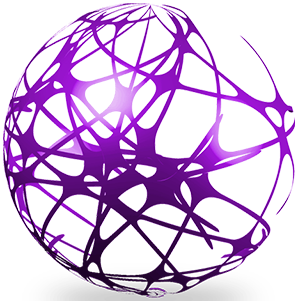CIRCT 2026
2026 International Conference on Intelligent Robotics and Control Technology (CIRCT 2026) will be held in Wuxi, China during June 12-14, 2026. It is sponsored by Wuxi University; organized by School of Cyber Science and Engineering, Wuxi University. (该会议由无锡学院主办,无锡学院网络空间安全学院和无锡学院基础部承办)
CIRCT 2026 is intended as an international forum to bring together academicians, scientists, engineers, and researchers working in the fields of Intelligent Robotics and Control Technology to exchange views, share their expertise, experience and research results, and discuss the challenges and future directions in their specialized areas.
During the upcoming conference, the invited renowned professors will share with us the recent innovations in the fields of Intelligent Robotics and Control Technology. The conference will mainly feature on keynote speeches as well as peer-reviewed paper presentations. In addition, social program or academic visit will be arranged to encourage communication, discussion or cooperation among the researchers in this field.
We invite submissions of papers presenting an original high-quality research and development for the conference. All papers must be written in English and will be peer-reviewed by technical committees of the Conference and all accepted papers will be published in the conference proceedings.
★ All accepted papers will be included in CIRCT 2026 Conference Proceedings, which will be published by IOP and submitted for indexing by EI Compendex, Scopus and CPCI-S. < 所有被接收的文章都将发表在CIRCT 2026 会议论文集中, 所有被接收的文章都将由IOP出版社出版,出版后所有文章都将提交EI核心, Scopus及CPCI-S等数据库检索>.
Call For papers
Intelligent Robotics and Control TechnologyTopic of Interest
Research and Applications of Mobile Robotics, Manipulation Robotics, Human-Robot Interaction (HRI), Robotic Vision, Sensor Fusion, Machine Learning for Robotics, Classical Control, Modern Control, Adaptive Control, Robust Control, Nonlinear Control, Predictive Control (see more topics )
Submission Instructions
All submissions should be written in English and submit through our Online Submission System. Papers reporting original, unpublished research results and experiences are solicited. Submissions must not be under consideration for publication elsewhere. The paper format should follow the Template before submitting.
Important Dates
Paper Submission Deadline:
May 12, 2026
Paper Status Notification Deadline:
May 19, 2026
Registration Deadline:
May 26, 2026
Publication
All accepted papers will be included in CIRCT 2026 Conference Proceedings, which will be published by IOP and submitted for indexing byEI Compendex, Scopus and CPCI-S. <所有被接收的文章都将发表在CIRCT 2026 会议论文集中,所有被接收的文章都将由IOP出版社出版,出版后所有文章都将提交EI核心,Scopus及CPCI-S检索>.
Review Process
Unbiased consideration is given to all manuscripts offered for inclusion in the CIRCT 2026 proceedings. All papers will be subject to a double-blind peer review process and each paper will be reviewed by at least 2-3 reviewers. The review result comes out within 3-4 weeks and will be sent to the authors by email along with the review comments.
Submission & Review Process
1. Unbiased consideration is given to all manuscripts offered for inclusion in the CIRCT 2026 proceedings regardless of race, gender, religious belief, ethnic origin, citizenship or political philosophy of the authors.
2. All submissions should be written in English and submit through our Online Submission System. Papers reporting original, unpublished research results and experiences are solicited. Submissions must not be under consideration for publication elsewhere, or they would be rejected instantly.
3. The paper format should follow the Template before submitting. All papers will be subject to a double-blind peer review process and each paper will be reviewed by at least 2-3 reviewers. The review result comes out within 3-4 weeks and will be sent to the authors by email along with the review comments.
4. If necessary revisions (minor or major revisions) are required by the reviewers, then the revised articles should be submitted within 2 weeks and will be sent to review again by the initial reviewer(s). If the revisions are accepted by the initial reviewer(s), then the revised papers will be accepted by our conference. All accepted and presented papers will be included in the conference proceedings for publication.
General Program
June 12, 2026 (Friday)
Participants Onsite Registration & Conference Materials Collection
June 13, 2026 (Saturday)
Keynote Speeches + Participants' Oral Presentations
June 14, 2026 (Sunday)
One Day Tour (Pending)
Latest News
Sed ut perspiciaatis unde omnis iste natus error sit voluptatem accusantium doloremque laudantium, totam rem aperiam, eaque ipsa quae ab illo inventore veritatis et quasi architecto beatae vitae dicta sunt explicabo. Nemo enim ipsam voluptatem quia voluptas
Contact us
We are friendly and available to chat. Reach out to us at anytime and we’ll happily answer your questions regarding the conference.

Ms. Kathy
Conference Secretary
Sponsored by


